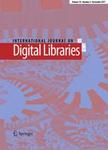版权所有:内蒙古大学图书馆 技术提供:维普资讯• 智图
内蒙古自治区呼和浩特市赛罕区大学西街235号 邮编: 010021

作者机构:TIB Leibniz Informat Ctr Sci & Technol Hannover Germany
出 版 物:《INTERNATIONAL JOURNAL ON DIGITAL LIBRARIES》 (国际数字信息库杂志)
年 卷 期:2024年第25卷第2期
页 面:273-285页
学科分类:1205[管理学-图书情报与档案管理] 08[工学] 0812[工学-计算机科学与技术(可授工学、理学学位)]
基 金:European Research Council TIB Leibniz Information Centre for Science and Technology
主 题:Crowdsourcing microtasks Knowledge graph validation Scholarly knowledge graphs User interface evaluation
摘 要:Due to the growing number of scholarly publications, finding relevant articles becomes increasingly difficult. Scholarly knowledge graphs can be used to organize the scholarly knowledge presented within those publications and represent them in machine-readable formats. Natural language processing (NLP) provides scalable methods to automatically extract knowledge from articles and populate scholarly knowledge graphs. However, NLP extraction is generally not sufficiently accurate and, thus, fails to generate high granularity quality data. In this work, we present TinyGenius, a methodology to validate NLP-extracted scholarly knowledge statements using microtasks performed with crowdsourcing. TinyGenius is employed to populate a paper-centric knowledge graph, using five distinct NLP methods. We extend our previous work of the TinyGenius methodology in various ways. Specifically, we discuss the NLP tasks in more detail and include an explanation of the data model. Moreover, we present a user evaluation where participants validate the generated NLP statements. The results indicate that employing microtasks for statement validation is a promising approach despite the varying participant agreement for different microtasks.